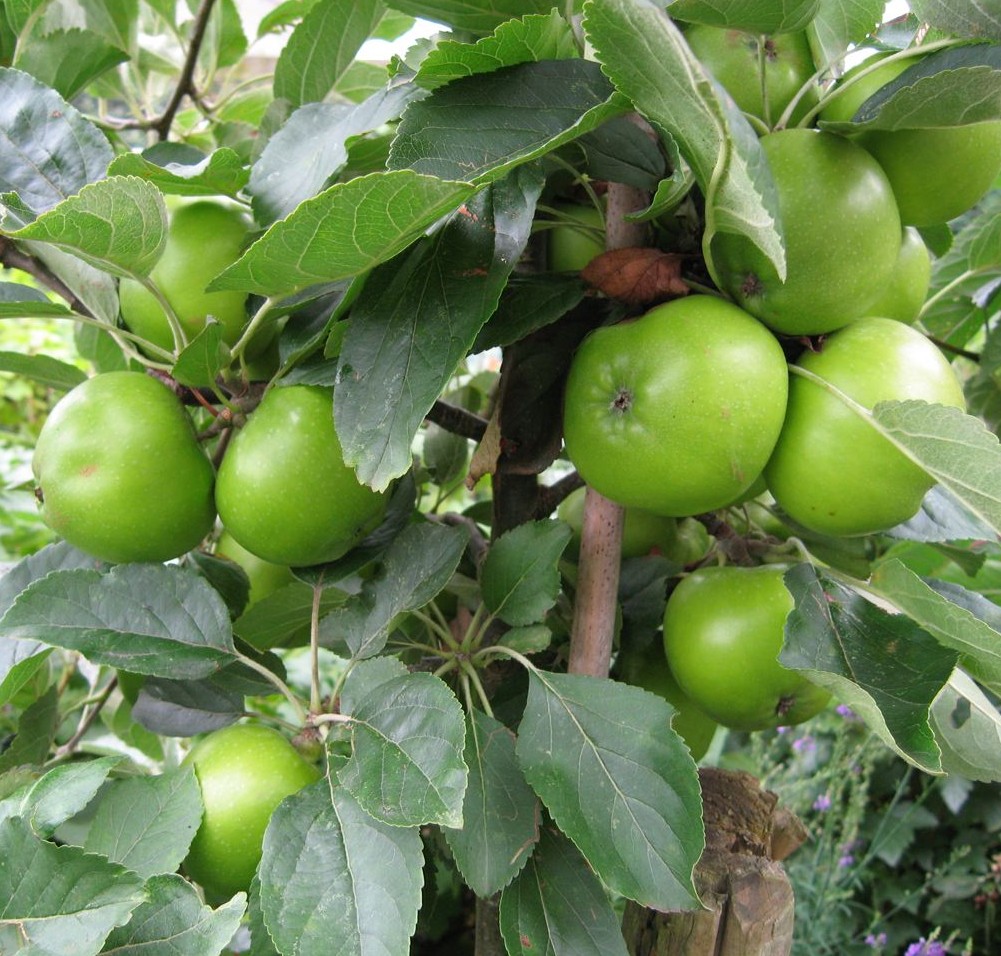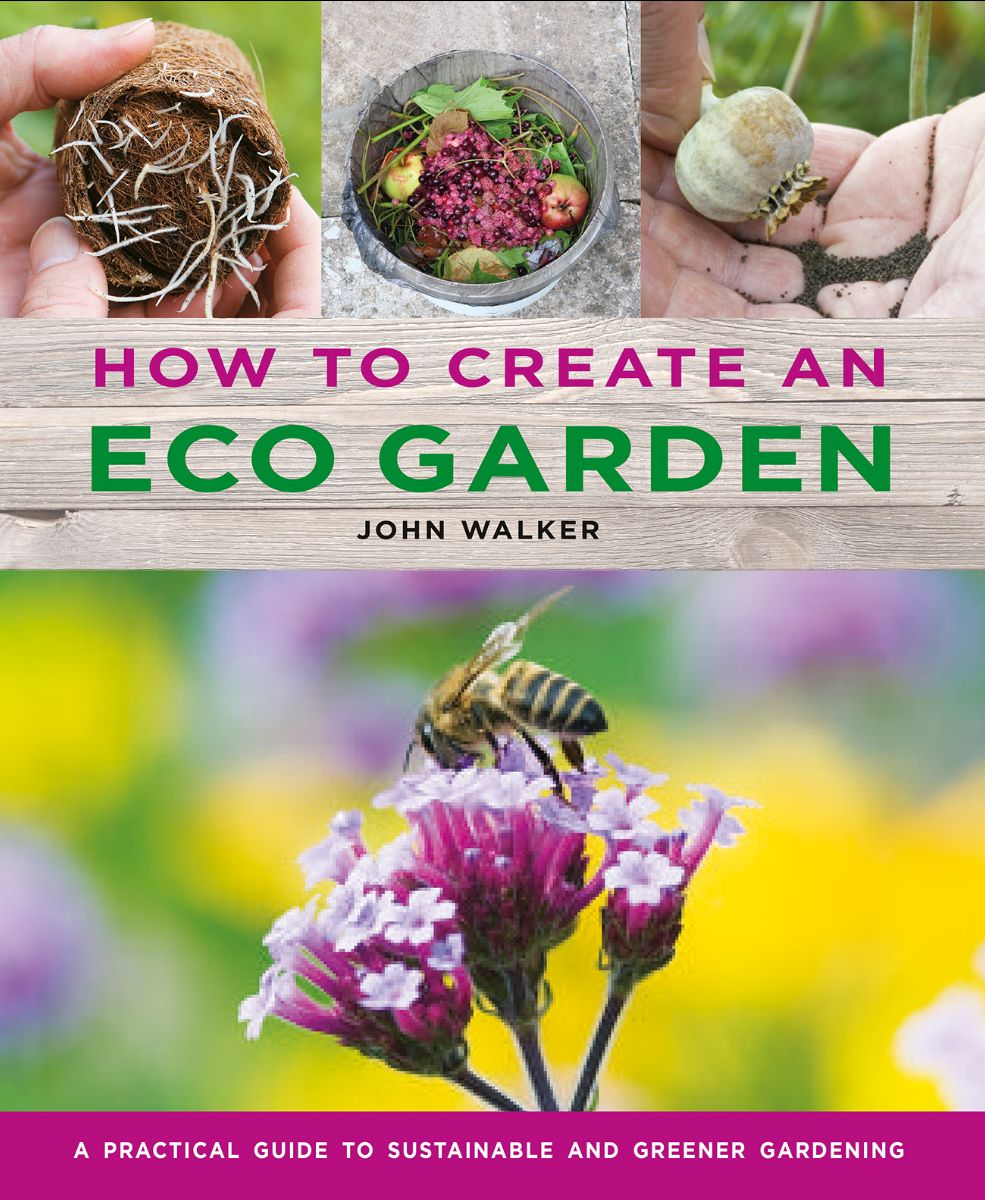Becoming ‘food secure’ and curtailing climate change by growing our own makes a great sound bite, but where is the evidence to back it up?
By John Walker. Published in Organic Garden & Home, March 2009.
An apple a day – so the saying goes – keeps the doctor away. But that’s only the start of it. It’s now widely accepted that by growing our own apples we can also help to improve ‘food security’ by reducing our nation’s reliance on imported crops (only five per cent of the fruit we eat is UK-grown) and keep the worst effects of climate change at bay. The closer that food is grown to where it’s eaten, the smaller its carbon footprint. Picking an apple from a tree in your garden requires no packaging, no oil-dependent transport, no energy-intensive cold storage and, if it’s grown organically, no applications of oil-gobbling chemical sprays or fertilisers.
Buff a shine on an apple and sink your teeth into it right there, next to the tree, and you can forget ‘food miles’ or even ‘food feet’ – instead, think food inches (kilometres, metres and centimetres if you must). With that degree of freshness, and the certainty that no chemical nasties are lurking in the peel, try and stop at munching only one apple a day.

This ‘columnar’ apple bears fruits on short spurs on its 1.8m (6ft) tall stem, but all the catalogue says is that it will “fruit prolifically when mature” – not much use when you’re wondering how many trees you need to plant…
But, for clarity’s sake, let’s assume your aim is to grow enough apples to eat one fresh fruit a day, year-round. That’s seven apples a week, around 30 a month, or 365 fruits a year – a tall order by any gardening standard. The main season for UK-grown apples is autumn, with choice of variety influencing the length of the eating season. Choosing those noted for their keeping qualities, combined with the right storage conditions (cool and moist), can ensure ‘fresh’ fruits right through winter and into the following spring. Realistically, and with some planning and tenacity, you could expect to be eating your own ‘apple a day’ for say six months, starting in early autumn. There are no fresh UK-grown apples available in late spring and summer (except from cold stores), so eating two a day from autumn to spring leaves the maths unchanged.
The two key words here are ‘planning’ and ‘tenacity’. You’ll need to think carefully about which varieties to grow to start eating fruits fresh from the tree in early autumn, then stored fruits through to spring. You’ll need to decide what kind of apple trees you’re going to grow, whether they’ll be in a trained form, such as a cordon, what rootstocks you’ll choose (to influence tree size), and where in your garden to plant them. You might need to place orders with a specialist local apple tree grower a year or more in advance to get the combination of varieties and rootstocks to suit your region. That’s some planning – but it’s nothing compared to the tenacity needed to actually work out how many apple trees you need plant to sate your developing lust for fresh, home-grown fruit.
Growing our own food, while simultaneously cutting our personal carbon footprints, is indisputably an all-round good idea, and the media, of every hue, is telling us ad nauseam what a wonderful thing it is to ‘grow your own’, and how, to borrow Garden Organic’s current clarion call, we should all be ‘digging for victory’. It’s churlish to disagree with that, but if I read another article written by someone who doesn’t know their artichokes from their eggplants, I’ll scream. And if another book appears under the bandwagon imprint, written by someone who knows the difference between an eggplant and an artichoke but can’t tell me what I need to know, I’ll scream louder.

I counted about 30 fruits on these two trees, grown on very dwarfing rootstocks in a friend’s garden – enough for one fruit a day for a month.
What I desperately need to know is this: how many apple trees should I plant to give me those 365 fresh, pesticide-free fruits? Answers on a postcard, or email me. I’m not expecting an avalanche of responses, but perhaps I should be. The problem with well-meaning writers struggling to tell their asparagus from their endive is that it’s easy to waffle about how glorious growing your own is (even if they’ve not done it), but harder to start delivering the gardening nuts and bolts we need if we’re to make inroads on shrinking our carbon footprints and becoming more ‘food secure’.
You might think, why bother? Isn’t it enough that more people are starting to grow their own? Do we really need to be telling folk that to do a proper job on decreasing their reliance on imported food, while cutting their carbon emissions to boot, they need to do some maths?
Well, Garden Organic’s call to ‘dig for victory’ suggests – just like the Second World War’s call for increased food security – that there’s a battle to be won. Most great battles aren’t won by sheer brute force, but by clear and strategic planning. Although every little helps, if we’re sincere about making sure our climate system doesn’t run amok, we need to blow the media fluff off the grow-your-own ‘phenomenon’ and get serious. We need to start seeing growing food as a vital part of our day-to-day, carbon-lighter lives, know it can make a real, measurable difference, and enjoy the brilliant buzz it brings.
“There’s much to be learned from organic gardeners, who’ve been quietly practising food self-sufficiency for decades”
Some books and magazines (but alas few catalogues) excel at explaining how to grow apples, but it’s rare to find any that have done the maths and can tell me how many trees, and in what size and form, I need to plant to get me my 365 mouth-watering fruits. But nascent fruitophiles need not despair. For one answer, we can look to cutting-edge commercial apple growing as perfected by the Dutch. Their knipboom or ‘leg’ apple trees are close- planted, around 1m apart, and grow vertically on a main stem with side branches, to about 2m tall. A dwarfing M9 rootstock is used and they’re grafted much higher than normal. The trees are planted very shallowly and then grown within an inch of their lives, putting them under intense stress.

Cordon apples, grown as a single stem trained at a 45 degree angle, make excellent use of vertical cropping space, but how many do I plant to get me my ‘apple a day’?
Brutal as it sounds, this clinging to life results in pickable apples in the first year, and then a regular harvest of 80 to 100 fruits per tree by their third year. So four ‘leg’ trees should comfortably bring in my 365 fruits. I’ll need to water regularly, and follow a straightforward pruning regime, but I like it. I’ll mourn the artistry of training a cordon or an espalier, but I’ve struggled to find reliable information on how many of either I would need to plant to get my 365 fruits.
I’m sure the information is there for the asking, and you, dear reader, might be the key to unlocking it. You might have been growing apples for yonks and know, without blinking, how many apples your trees yield up – and what varieties excel in your area. Never has such information been so urgently needed. We can draw on modern growing techniques and be picking our 365 apples within a few years, but there’s much to be learnt from organic gardeners who’ve been quietly practising food self-sufficiency for decades.
Garden Organic’s research has found that organic gardeners have a carbon footprint a third less than the national average, achieved in part by growing their own. They recently said, “We need to provide the statistical and quantitative evidence… that will involve further research and proof… to ensure domestic food production is taken seriously, and not just as a hobby or fad.” Here’s to that, but I hope they don’t take too long about it; climate scientists tell us we have about 10 years to start slashing our carbon emissions. Modern fruit-growing is offering us some of the answers about how many fruit trees we need to plant – but for others, it’s over to you.




